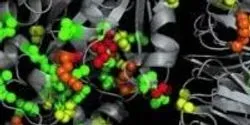Cell & Molecular Biology

The older we get, the less likely we are to hear well, as our inner ear sensory hair cells succumb to age or injury. Intriguingly, humans are one-upped by fish here. Similar hair cells in a fish sensory system that dots their bodies and forms the lateral line, by which they discern water movement, are readily regenerated if damage or death occurs.

Data from 20 million cells collected by U of T researchers to develop detailed cell map.

Thawing cells in a regulated environment presents many challenges. The need to minimize variability through standardization is crucial. Whereas the science of cell freezing has become highly standardized in order to improve and retain optimal viability and function, cell thawing has been overlooked and has much to gain from similar standardization.

Gel permeation chromatography (GPC) is the most widely accepted and used analytical method for obtaining molar mass averages of both synthetic and biopolymers. Traditionally, molar mass averages are obtained via a peak position calibration involving a series of standards of known molar mass and chemistry analyzed by GPC coupled to a differential refractive index (RI) detector.

Cell-based assays have become the go-to technology for pharmaceutical, environmental, and toxicology labs. Cells are far less costly to maintain than test animals and don’t involve the ethical considerations. But the complexity of cell-based assays compared with chemical or biochemical assays presents distinct challenges to laboratory managers.

Horizon Discovery Group plc and Thermo Fisher Scientific Sign Supply and Commercialization Agreement
Horizon Discovery Group plc (LSE:HZD) (Horizon), the international life science company supplying research tools and services that power genomics research and the development of personalized medicines, today (Apr. 20) announced it has signed a supply and commercialization agreement with Thermo Fisher Scientific, the world leader in serving science.














